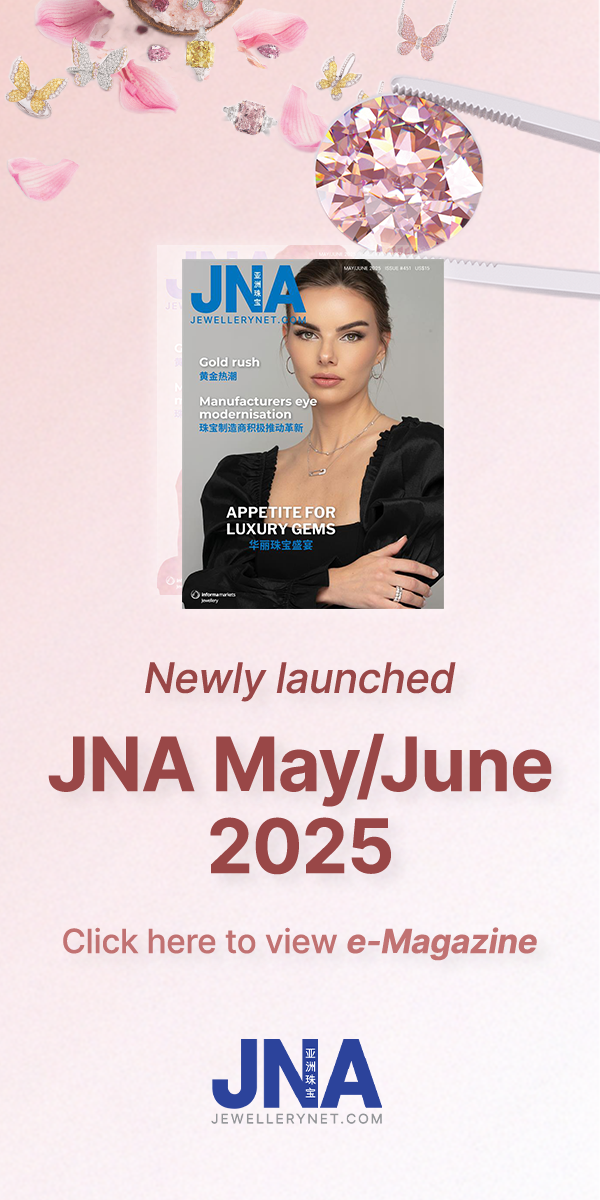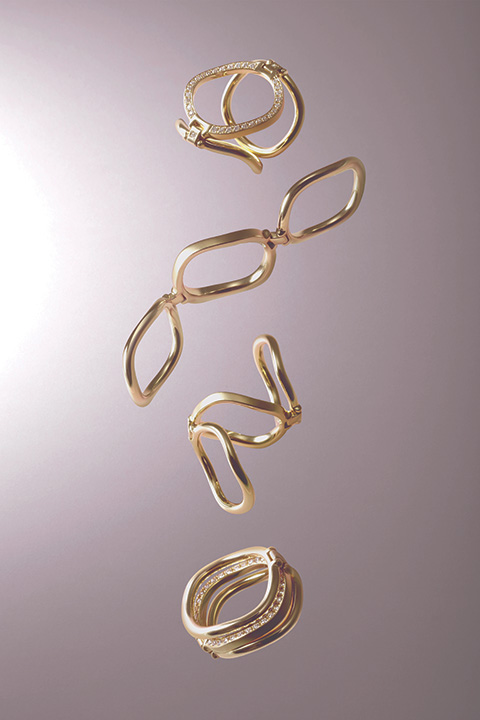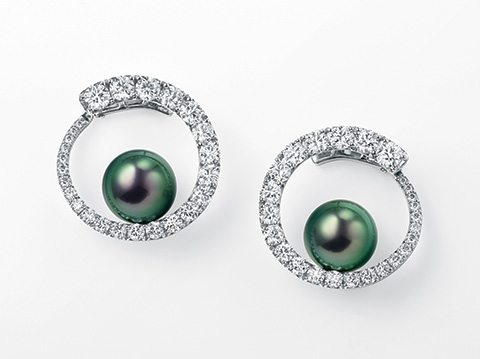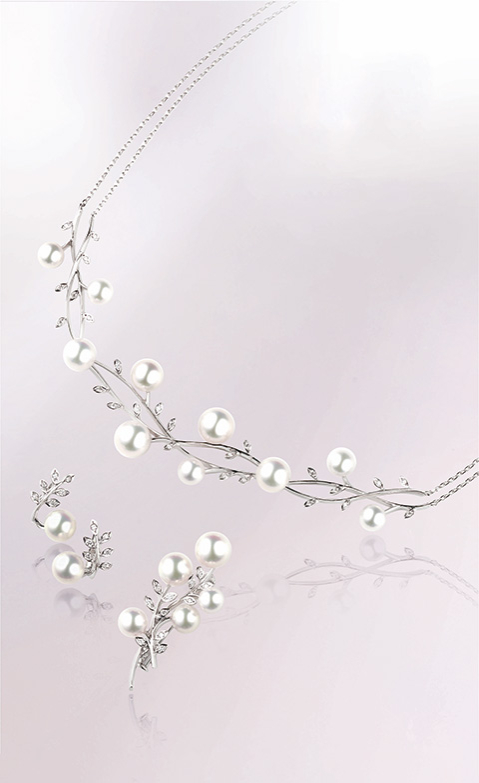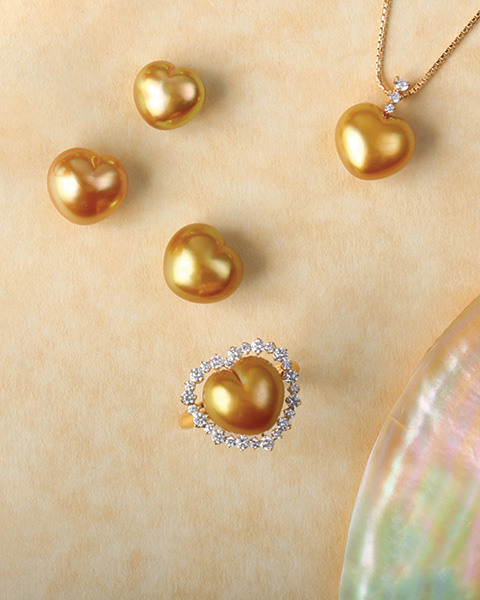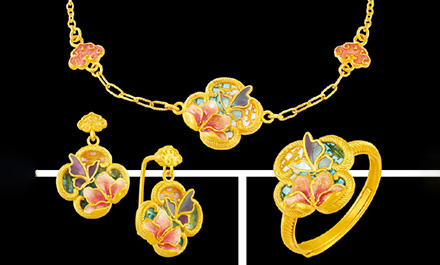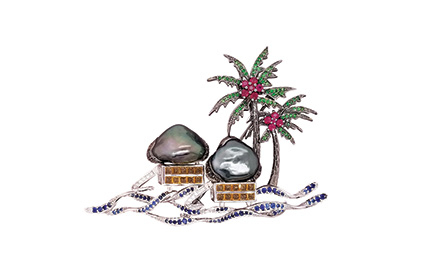Renowned for producing refined jewellery pieces, Japan is aiming to sustain industry growth by strengthening product offerings and seizing business opportunities in overseas markets.
This article first appeared in the JNA July/August 2024 issue.
Japanese jewellery manufacturers have witnessed solid growth in recent years, buoyed by strong demand for high-quality and unique jewellery pieces from affluent consumers as well as a steady influx of inbound visitors post-pandemic.
To sustain this momentum, jewellers are finetuning strategies to prioritise quality, focus on distinctive products and expand to international markets.
They also remain optimistic about prospects of steady industry growth amid challenges such as a saturated domestic jewellery market, aging craftsmen and global economic uncertainties.
Glowing opportunities
Japanese manufacturers said the pearl, diamond and coloured gemstone jewellery segments as well as gold chains and coins have been performing strongly both in the domestic and international markets since April 2023.
Kengo Kajita, fourth-generation jeweller and president of Kajita Co Ltd, explained, “The yen’s depreciation and rising costs of materials significantly affected the domestic market, inevitably pushing jewellery prices up. However, with Japan’s Nikkei 225 stock index reaching a record high in 34 years, demand from wealthy consumers also rose, supporting substantial sales growth.”
Coloured gemstone jeweller Kajita operates retail and wholesale businesses. “We see solid interest in aquamarine, morganite, teal-coloured sapphire, emerald, alexandrite and Paraiba tourmaline,” Kengo remarked. “There is a shift in consumer preferences from vibrant and bold colours to more subtle and slightly smoky hues.”
He also cited the rising value of and appreciation for coloured gemstones as evidenced by encouraging response to Kajita’s latest collection, Kajita Love, which features high-quality engagement rings adorned with coloured gemstones.
Meanwhile, Isao Hori, managing director of Kuwayama Corp, noticed a widening polarisation in consumer products, which he attributed to escalating gold prices and fluctuations in diamond prices.
He explained that high-end jewellery that displays the full allure of precious metals and coloured gemstones, and higher price-point products like Kihei chains and coin pendants, are gaining traction among well-off buyers. At the same time, dainty fashionable jewellery and silver accessories are becoming more prevalent in the market. These pieces cater to buyers who prefer trendier designs that are not as pricey as gold.
“The challenge is to secure highly skilled craftsmen and designers who are capable of producing high-end jewellery and bread-and-butter products, and striking a balance between these productions,” noted Hori.
Distinctive pearls
Japan's pearl exports have been on the rise over the past two years amid a global pearl boom. Natural and cultured pearl exports reached more than 45.5 billion yen (around US$289.2 million) in 2023, up from 23.8 billion yen (around US$151.3 million) in 2022, with Hong Kong as Japan’s largest pearl export destination, according to the Ministry of Agriculture, Forestry and Fisheries of Japan.
Nagahori Corp affirmed this robust performance. Masayuki Sanada, Nagahori's managing director, said, “Akoya pearls and related jewellery products boosted our overall sales. We expect Akoya pearls to further grow in popularity amid declining annual production.”
Apart from Akoya pearls, pearl variants with distinctive shapes and colours are also becoming highly sought after in the market.
Sanada highlighted the company’s heart-shaped golden South Sea pearls, exclusively sold in Japan by Nagahori. “These pearls witnessed an incredible surge in demand last year, captivating consumers with their one-of-a-kind characteristics,” he said.
Meanwhile, Seibido Pearl Co Ltd, which specialises in high-quality loose pearls and pearl jewellery, is shining the spotlight on its iconic Super Peacock Tahitian pearl. Koji Isowa, president of Seibido Pearl, said these multicoloured black-lipped pearl necklaces are especially liked by buyers from China.
“Our business has been thriving throughout the past year. Supply and production struggled to keep up with overwhelming demand for premium-quality pearls,” he added.
Isowa also noted a shift in consumer preferences. “In the past, there was solid interest in round and unblemished pearls, even if these lacked lustre. Nowadays, highly lustrous pearls are more popular while surface and shape imperfections are becoming more acceptable. Buyers are willing to pay a premium if the pearls are of good quality.”
Beyond Japan
Japanese jewellery manufacturers traditionally focus on the domestic market, but some changes are underway. According to companies interviewed by JNA, Japan remains a primary market, but they are also actively exploring international destinations.
"We have experienced a significant growth in overseas markets, particularly from mainland China, Hong Kong and Taiwan, which saw solid sales last year. Moving forward, we aim to expand our presence in the European, Southeast Asian and Middle Eastern regions,” shared Sanada of Nagahori Corp.
Kuwayama Corp is also training its sights on foreign markets, specifically East and Southeast Asia. Hori noted, “In particular, consumer preferences in South Korea and Taiwan closely align with those of Japan. Our sales are steadily rising in the Philippines, too, since 18-karat gold jewellery pieces are highly favoured there.”
The company is likewise eyeing strong sales of platinum chains in India. “Although it is traditionally a market for gold, there is a certain level of demand for platinum jewellery,” continued Hori.
Kajita, for its part, has successfully established a presence in a Singaporean department store under the brand Fujimori Kajita since 2019. The company aims to utilise Singapore as a base to explore opportunities in Southeast Asia and Europe.
“We should focus more on overseas markets based on business prospects we have observed at Hong Kong jewellery shows. We must build strong networks within the industry and gemstone-producing regions to tap new opportunities,” Kengo of Kajita said.
He also pointed out that the industry faces challenges such as aging craftsmen and lack of successors.
“Japanese craftsmanship is significantly undervalued,” he explained. “We need to prioritise the development of high-value products and effective marketing to raise craftsmen’s wages. Strengthening brand presence overseas and aligning pricing with global standards are crucial to achieving this goal.”
Quality and uniqueness
Manufacturers emphasised the importance of offering high-quality and unique products, which is key to driving business growth.
Junko Nakayama, managing director of Shimada Co Ltd, noted that customers now prioritise quality and are willing to pay more for superior products. She believed that developing a high-quality product with distinctive features and good value for money is more important than offering exceptionally low prices on a one-off basis.
“By leveraging the strength of our own factories, we can control the quality of our products and create exclusive designs. This helps build customer confidence and encourages repeat purchases,” Nakayama said.
Kuwayama Corp, meanwhile, is strengthening its expansive array of gold and platinum jewellery offerings to meet ever-evolving buyer demand. The company official said their rings with intricate shapes crafted using high-performance 5-axis CNC machines, alongside the use of highly recyclable materials, hard pure gold and pure platinum, set them apart from the competition.
“Enquiries for pure gold and pure platinum remain strong. We are accelerating development of new materials that possess a moderate level of hardness, which will be highly valued in the market in the future,” Hori said.
Manufacturers remain optimistic about prospects for Japan’s jewellery manufacturing sector amid a few challenges. “Novelty and price point are important, but companies lacking solid funding, organised operations and long-standing trust may struggle to survive. Building consumer trust through a consolidated business approach, rather than focusing solely on fleeting trends, is crucial to the industry's growth,” said Sanada of Nagahori Corp.


